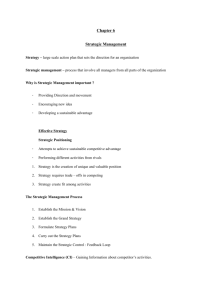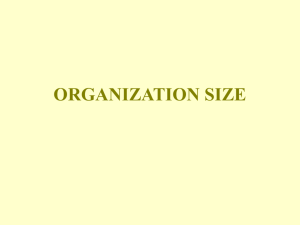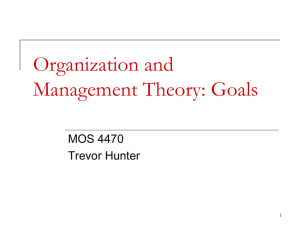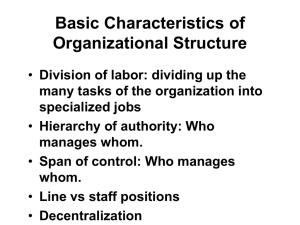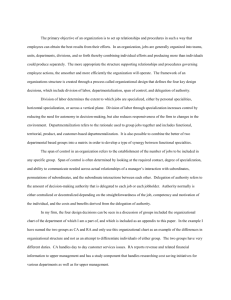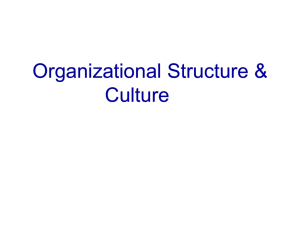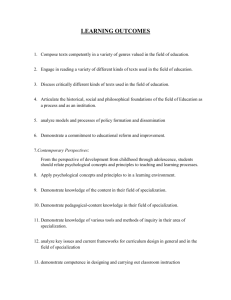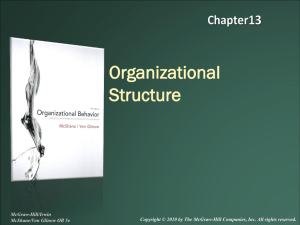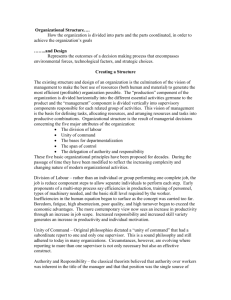Historical data analysis techniques
advertisement
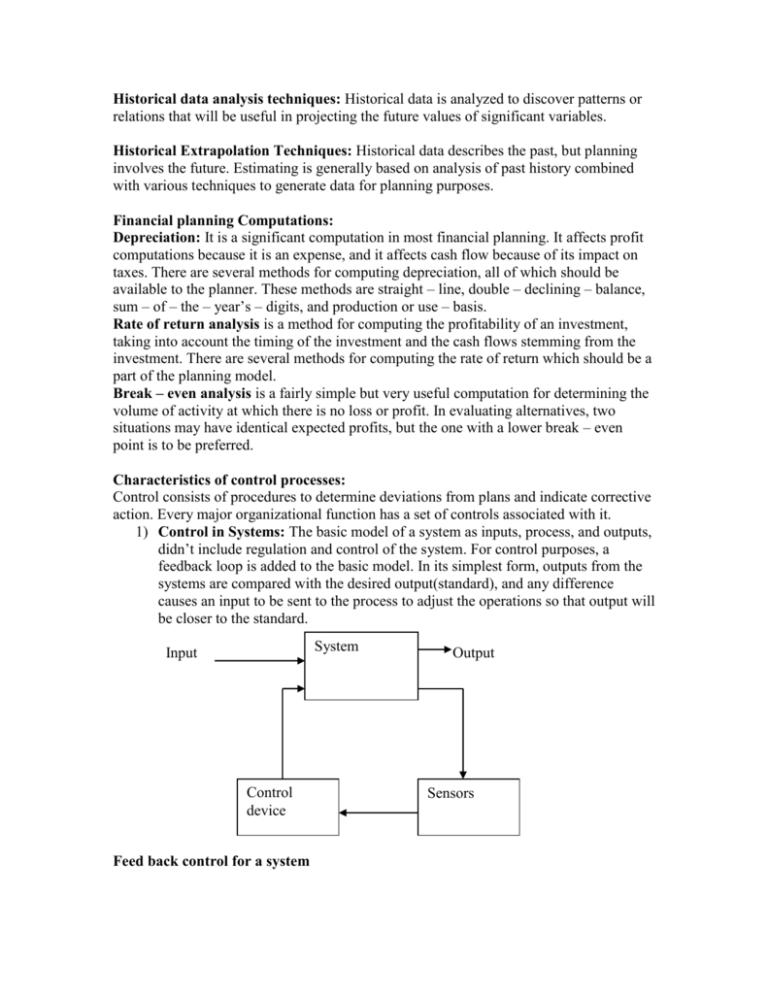
Historical data analysis techniques: Historical data is analyzed to discover patterns or relations that will be useful in projecting the future values of significant variables. Historical Extrapolation Techniques: Historical data describes the past, but planning involves the future. Estimating is generally based on analysis of past history combined with various techniques to generate data for planning purposes. Financial planning Computations: Depreciation: It is a significant computation in most financial planning. It affects profit computations because it is an expense, and it affects cash flow because of its impact on taxes. There are several methods for computing depreciation, all of which should be available to the planner. These methods are straight – line, double – declining – balance, sum – of – the – year’s – digits, and production or use – basis. Rate of return analysis is a method for computing the profitability of an investment, taking into account the timing of the investment and the cash flows stemming from the investment. There are several methods for computing the rate of return which should be a part of the planning model. Break – even analysis is a fairly simple but very useful computation for determining the volume of activity at which there is no loss or profit. In evaluating alternatives, two situations may have identical expected profits, but the one with a lower break – even point is to be preferred. Characteristics of control processes: Control consists of procedures to determine deviations from plans and indicate corrective action. Every major organizational function has a set of controls associated with it. 1) Control in Systems: The basic model of a system as inputs, process, and outputs, didn’t include regulation and control of the system. For control purposes, a feedback loop is added to the basic model. In its simplest form, outputs from the systems are compared with the desired output(standard), and any difference causes an input to be sent to the process to adjust the operations so that output will be closer to the standard. System Input Control device Feed back control for a system Output Sensors Feedback, which seeks to dampen and reduce fluctuations around the standards, is termed negative feedback. It is used in feedback control loops. Positive feedback reinforces the direction in which the system is moving. In other words, positive feedback causes the system to repeat or amplify an adjustment or action. 2) Negative feedback control: Negative feedback control in a system means keeping the system operating within certain limits of performance. For example, an automated production system is in control if inputs of material and energy are converted to output of produced items using a standard amount of material and energy and with the percentage of defective items falling within allowable limits. Input Processor Output Sensor Activating unit Control Comparision Standard Negative Feedback control elements Feedback control elements 3) Law of Requisite variety: The law of requisite variety means that for a system to be controlled, every controller must be provided with a) enough control responses to cover all possible conditions the system may face, b) decision rules for generating all possible control responses, c) the authority to become a self – organizing system in order to generate control responses. THE BASIC MODEL OF ORGANIZATIONAL STRUCTURE: 1)Hierarchy of authority: Authority is evidenced by control over resources, rewards, and tasks, and authorization to make decisions regarding them. As a rule, authority is distributed according to the level in the hierarchy; i.e., the higher the level of a position, the greater its authority. Each position has span of control. This describes the number of immediate subordinates that a manager is to supervise. Figure – 1 Chief Executive Officer Research Marketing Manufactur ing Figure – 1 Basic hierarchical organization with functional specialization In figure – 2 On the top, a “tall” hierarchy results from narrow spans of control at each level. On the bottom, a “flat” hierarchical structure is shown with the chief executive having a very wide span of control. 2) Specialization: Specialization refers to the division of labor within the organization. A typical organization is divided along functional lines (e.g. marketing, production, accounting, etc.), which encourages specialization within each function (figure – 1). Generally, there are two different ways in which tasks can be divided and assigned. The first is to give broadly trained specialists a comprehensive range of activities to perform; Effective of span of control on structure. The second is to subdivide the activities into small, well – specified tasks that nonspecialists can be easily trained to perform. Examples of the former are professionals and craft workers; the latter is exemplified by an assembly – line occupation. There are several important reasons for this functional specialization: a) The two functions require different training and expertise. An analyst needs different skills and training than an operator. b) Segregating the two functions improves internal control because the design of procedures is separated from their execution. If the person who designs and implements an application also operates it, there is more opportunity for fraud or unauthorized changes in executing the procedures. 3) Formalization: The degree of formalization is the extent to which rules and procedures exist to handle organizational activities. One indication of formalization is the degree to which decisions for handling various situations are programmed, i.e., decision rules are specified in advance. The more formalized the organization, the less discretion individual organization members have in making decisions. 4) Centralization: Organizational centralization generally refers to the level in the organization where decision-making occurs. In a highly centralized organization, most decision-making occurs at the top of the hierarchy; the more decision – making authority is delegated to lower levels, the greater the decentralization. A flat hierarchy with a wide span of control is more likely to be associated with decentralization of authority and decision-making. In a highly formalized organization, operating personnel at low levels make decisions based on rules and procedures provided to them; exceptions are referred to higher levels for decisions. Lateral Relations: Organizational methods for reconciling the functional organization with product or service objectives are termed lateral relations. Organizational Learning: Organizational learning is the process by which an organization identifies action – outcome relationships, identifies and corrects errors, stores the experience in organizational personnel who teach new employees, and stores the experience in procedures, forms, systems, rules, computer programs, and other forms for transferring experience. In other words, it exhibits adaptive behavior. For example, a new employee in the data entry function is instructed in entry procedures plus error control and error handling procedures. Concepts of sociotechnical design: A sociotechnical approach to organizational change has been defined as one which recognizes organizations as purposive entities which have a variety of goals and which, in order to survive, and have to interact successfully with their surrounding social and business environments. Viewing organizations as sociotechnical systems requires making explicitly the interrelationships between the subsystems in the Leavitt model. Specifically, it focuses on human as well as technical and organizational objectives in effecting organizational change. ORGANISATIONAL STRUCTURE IMPLICATIONS FOR INFORMATION Concept Hierarchy of authority Specialization Formalization Centralization Modification of basic model Information model of organisation Organizational culture Implications for information systems A tall hierarchy with narrow span of control may mean that more formal control information is needed by upper levels than a flat hierarchy with wide span of control Information system applications are specialized to fit the specialization of the organization. Information systems are a major method for increasing formalization. Information systems can be assigned to suit any level of centralization. Information systems can be designed to support product or service organization, project organization, lateral relations, and matrix organization. Organizational mechanisms reduce the need for information processing and communication. Vertical information systems are an alternative to lateral relations. Information systems are used to coordinate lateral activities. Organizational culture affects Organizational power Organizational growth cycle Goal displacement Organizational learning Project model of organizational change Case for stable systems Systems that promote organizational change Organizations as sociotechnical systems information requirements and system acceptance. Organizational power affects organizational behavior during information system planning, resource allocation, and implementation. Computer systems can be an instrument of organizational power through access to information. Information systems may need to change for different stages of growth. When identifying goals during requirements determination, care should be taken to avoid displaced goals. Suggests need for information system design for both efficiency measures to promote single loop learning and effectiveness measures for double loop learning. Describes general concept for managing change with information system projects. Establish control over frequency of information system changes. Reporting critical change variables or relationships and use of multiple channels in a semi confusing system may be useful for promoting responses to a changing environment. Provides approach to requirements determination and job design when both social and technical considerations are involved.
